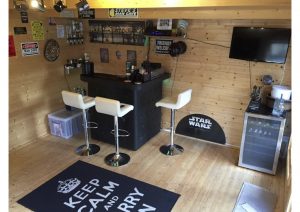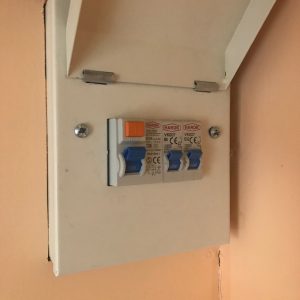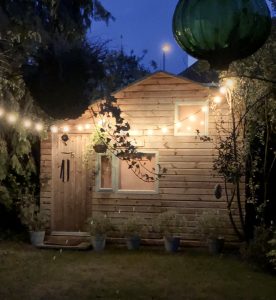 Heating. Lighting. Wine fridge.
Heating. Lighting. Wine fridge.
3 good reasons to run electricity to your log cabin.
With such a great investment and invaluable additional living space in your garden it would be daft not to.
So running electricity to it makes perfect sense so you can make the most of your cabin throughout the year.
Granted, that’s a large undertaking and is easier said than done – and certainly not a DIY job most of us should be attempting.
But by consulting a professional electrician, running a safe, reliable electricity supply to your cabin can be straightforward and hassle free.
So, first things first.
Certifiying the Work: Part P
In 2005 the Government introduced electrical safety rules into the Building Regulations for England and Wales.
Part P states that anyone carrying out electrical installation work in a home must make sure that the work is designed and installed to protect people from fire and electric shocks.
By law, all homeowners and landlords must be able to prove that all electrical installation work meets Part P or they will be committing a criminal offence.
To enable you to prove you have a safe and compliant electrical system in your cabin, you’ll need to either
- Notify your Local Authority Building Control about the installation work before it starts if you’re doing it yourself (see below), or
- Employ a registered electrician who is Part P compliant
Employing an electrician is the easiest option:
- they work to the UK national safety standard
- there will be no building-control charges to pay
- they will arrange a Building Regulations Compliance certificate confirming the electical work carried out meets Building Regulations
When the work is finished you will receive an:
- Electrical Installation Certificate or Minor Work Certificate that confirms that the work meets BS 7671
Electrical Installation Certificate
Important for any electrical works carried out since 2005.
When you sell your home you will be asked for this certificate for any work done after this date.
Should you have a fire your insurance company will ask for a copy of this certificate. Without one your insurance claim may be void.
Doing it Yourself
Should you wish to carry out the electrical work yourself – or use an un-registered electrician – you must inform your Local Authority Building Control before anything is done.
They will:
- visit and check before and during the work is carried out
- inspect the work to make sure it meets wiring regulations
- test and certificate it for you
There may be a charge for this.
What are You Going To Run Off the Electricity Supply?
So, once all this has been considered, have a think about what you will want to use electricity for.
Run this by your electrician to give them an idea of what your power useage is going to be to enable them to work out what is needed.
Don’t forget to consider outdoor lighting too.
How It’s Done
Depending on the amount of power that is going to be needed in your log cabin, there are 2 options for installing the electrical system.
 Taking power directly from the main consumer unit. Should there not be any spare a smaller consumer unit can be introduced from the main supply to the cabin. This will be RCD protected (Residual Current Device – designed to prevent you from getting a fatal electric shock if you touch something live, ie. a bare wire)
Taking power directly from the main consumer unit. Should there not be any spare a smaller consumer unit can be introduced from the main supply to the cabin. This will be RCD protected (Residual Current Device – designed to prevent you from getting a fatal electric shock if you touch something live, ie. a bare wire)
- Taking power from your existing house socket circuit but only if it is capable of this additional load. Only suitable if a single light and single socket is needed and the cabin is close to the house.
Armoured cable will be used to run the power supply to the cabin.
This will either:
- run above ground, clearly visible, alongside immovable objects like walls and fences, or be
- buried in a trench – recommended depth of no less than 500mm (one and a half spade depth), deeper if it is running under flower or vegetable beds, to ensure it won’t be disturbed accidentally in the future.
Top tip – if employing an electrician, it’s worth digging this trench yourself to save on costs!
If running an ethernet cable for a Wi-Fi connection, it would make sense to lay this at the same time as the electricity power cable – see my blog How to Connect your Log Cabin Office to the Internet

